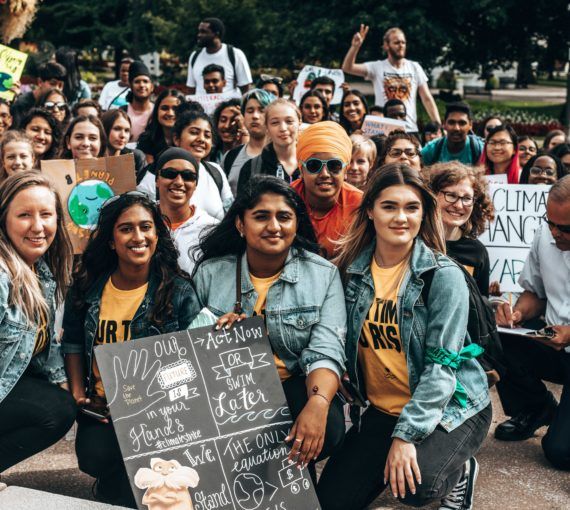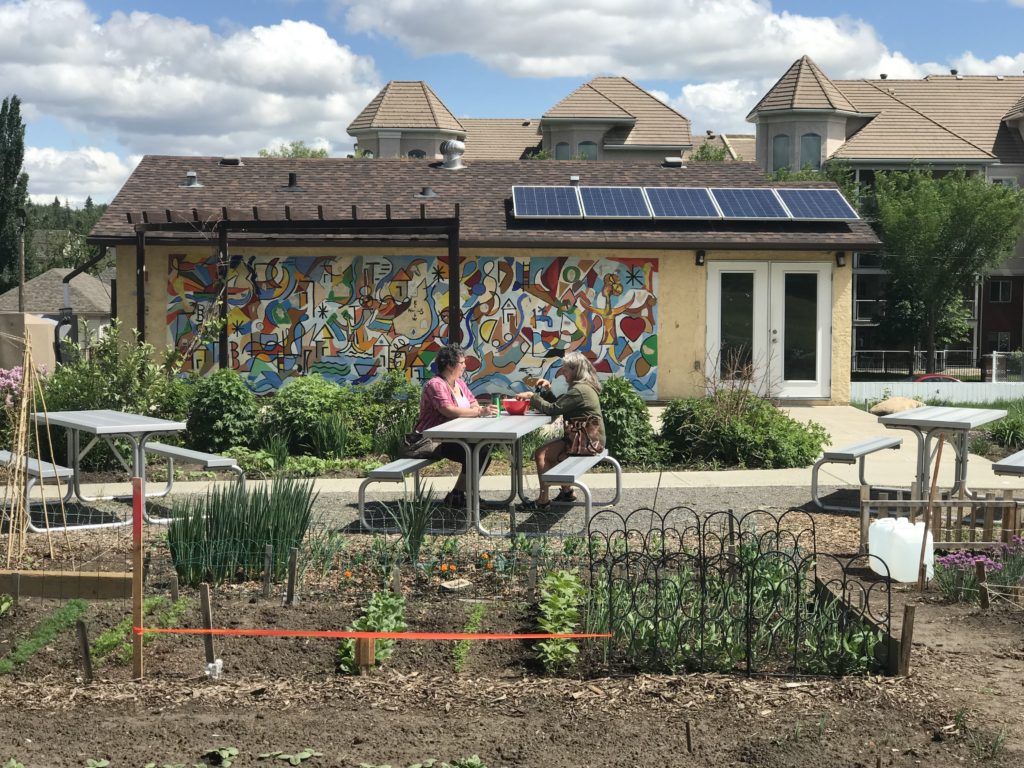
The technical and policy solutions for reducing emissions already exist, and our governments can choose to implement them with an aim to reach a zero-carbon future by 2050. (Photo: David Dodge via Green Energy Futures)
The science is clear: If we want to avoid the worst effects of a heating world, we have to curb our greenhouse gas emissions in a big way, and we have to do it now.
The good news is that the technical and policy solutions for reducing emissions already exist, and our governments can choose to implement them with an aim to reach a zero-carbon future by 2050. In Canada, some municipal governments have started referring to these solutions as “big moves” or “big shifts.”
Strategies for decreasing emissions
Big moves are emission-reduction strategies that target sectors that emit the most: transportation and buildings. Big moves are ambitious and challenging. They may not always be simple to implement, but with strong support and thoughtful planning, they can bring real change.
Here are some of the solutions municipal governments are implementing. For more information on this, see our climate plan assessment guide.
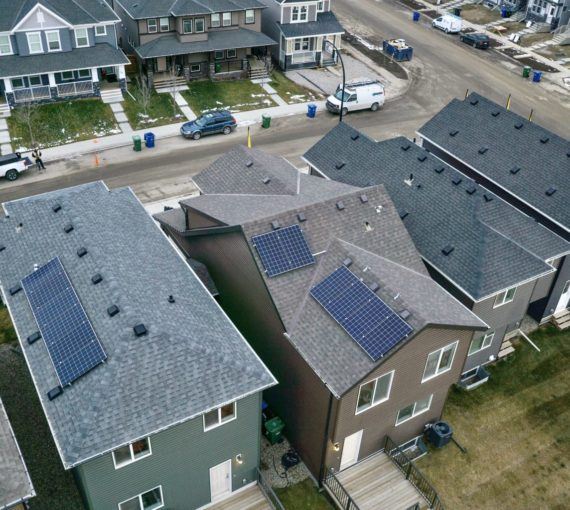
Building retrofits and energy efficiency
Deep-energy retrofits can lower the amount of energy a building requires by 60 per cent or more, thereby reducing both emissions and energy bills. The reduced demand for energy can then be met with low-carbon energy sources. Retrofits and other efficiency measures for existing buildings not only save money and create jobs but also help keep our homes and businesses warmer in winter and cooler in summer.

Building codes and zero-emissions new buildings
We need to make sure future buildings do not produce carbon emissions. Look for building codes or municipal standards that mandate all new buildings to be net-zero emissions within the next few years and specific policies for moving away from using fossil fuels such as natural gas in buildings.

Public transit and active transportation
The transportation sector is the largest source of emissions in most municipalities. Addressing transportation emissions involves setting goals and strategies and making investments in public transit. We want to make sure our communities are safe and full of opportunities for active transportation, and it’s important that transportation and land-use planning are aligned locally to enable stronger emissions reductions.

Low-carbon transportation and zero-emissions vehicles
We need to move to zero-emission vehicles (including transit and school bus fleets) as quickly as possible. Many cities and provinces in Canada already have mandates for 100 per cent zero-emission vehicle sales, some by as early as 2030. Municipalities can install charging infrastructure and require new buildings to be electric-vehicle ready.
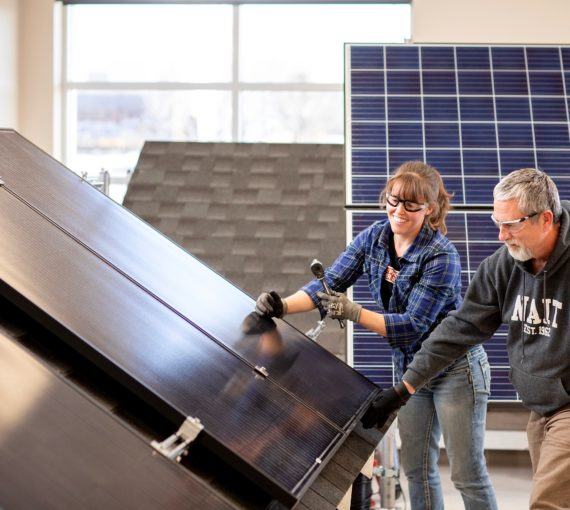
Local, distributed renewables
To meet our climate goals, all new energy must be renewable and free of carbon emissions. Solutions like rooftop solar, energy storage and community- or Indigenous-owned renewable energy projects can play an important role in your local plan, particularly in provinces with a significant amount of coal- or gas-fired electricity.
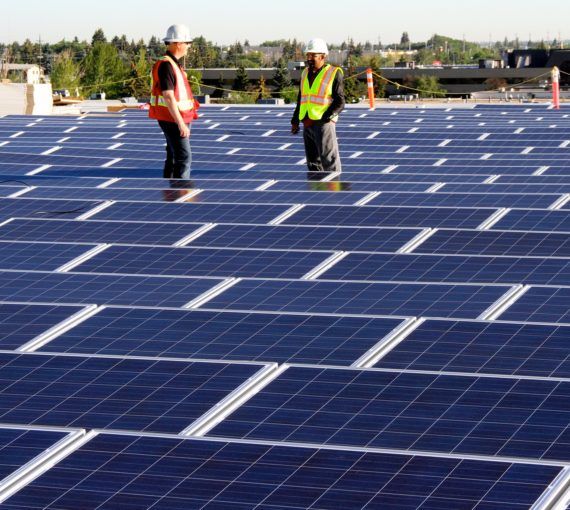
Utility-scale renewables and clean electricity
Some municipalities own or partner on large-scale renewable energy or energy-storage projects that contribute to an overall reduction in emissions. This can help ensure cleaner regional electricity, especially in provinces that have relatively dirty electricity grids.

Green landscapes and reforestation
Planting trees, greening municipal spaces and optimizing natural asset management to adapt to the effects of climate change and sequester emissions should all be included municipal climate mitigation and adaptation plans.
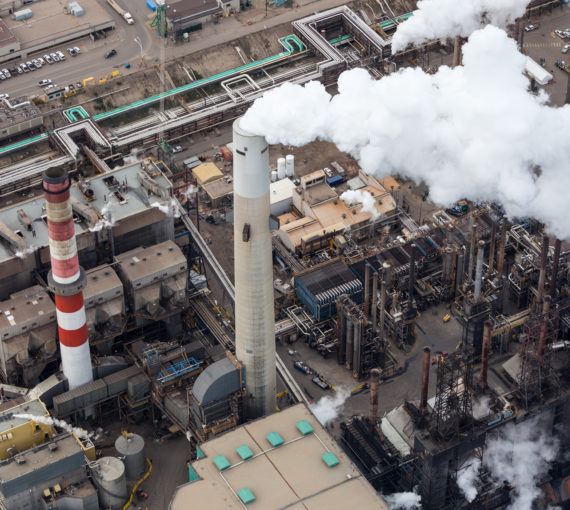
Industrial and commercial emissions reductions
Industrial and commercial sectors produce a large share of overall emissions in many municipalities. Look for specific ways that your local government aims to reduce emissions from these sectors.
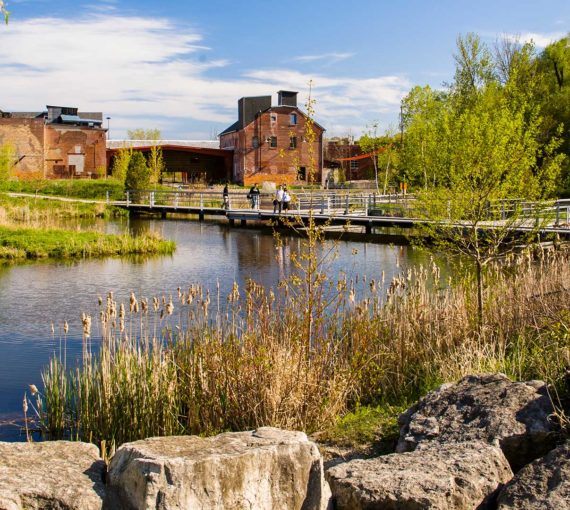
Water, wastewater and waste management
Our municipal waste and water systems also produce greenhouse gases. A climate plan can include measures to make water and wastewater systems more efficient, capture methane from existing waste facilities and divert waste away from landfills through recycling and composting programs.
Solutions in action
Throughout Canada, municipalities are identifying and implementing big moves that will help them achieve zero emissions by 2050. Here are a few examples:
- By 2030, emissions from Vancouver’s buildings will be cut in half as the city moves away from natural gas and toward energy efficiency and electric heat pumps.
- Halifax has committed to deep-energy retrofits for 100 per cent of residential and commercial buildings by 2040.
- Montreal will reduce building heating from natural gas and eliminate oil-based heating. One hundred per cent of municipal building stock operations will be zero carbon by 2030.
- The City of Regina has committed to being a 100 per cent renewable city by 2050.
- By 2040, 80 per cent of the vehicles on Toronto roads will be zero emission.
- The Town of Bridgewater, Nova Scotia’s climate plan includes measures to reduce the energy poverty rate by 20 per cent by 2025, and by more than 60 per cent by 2030.
Big moves require strong plans for action
Even the most innovative solutions won’t be effective without solid plans for implementation. If you want to work with your local government to take action on climate, you’ll want to look closely at your municipal climate plan and make sure it’s strong enough to have an impact.
Learn about climate action plans
This resource is part of Your voice at the table: A guide to mobilizing local government climate action. Learn to work with your local government so you can build a healthy, sustainable, resilient future together.



